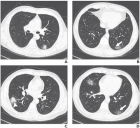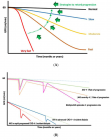Abstract
Research Article
Curettage is a risk factor for marginal umbilical cord insertion
Elie Nkwabong*, Simon Junior Mabol Mbeleck and Florence Tumasang
Published: 02 July, 2020 | Volume 3 - Issue 2 | Pages: 081-084
Objective: To identify the risk factors for marginal cord insertion (MCI).
Material and Methods: This case-control study was carried out between 1st February and 30th June 2019. Singletons with and without MCI at delivery were recruited. Main variables analyzed included maternal age, parity, number of previous dilatation and curettage (D&C) or manual vacuum aspiration (MVA), time interval between each procedure and conception, cord insertion. Fisher’s exact test, t-test and logistic regression were used to compare data from both groups.
Results: We found 60 cases of MCI (4.1%). The significant (p < 0.05) risk factors for MCI were past-history of D&C (aOR 5.97, 95% CI 1.95-18.25) particularly when conception occurred ˂ 5 months after D&C (OR 10.5, 95% CI 1.36-81.05), fetal female sex (aOR 3.82, 95% CI 1.41-10.32), parity ≥ 4 (aOR 2.63, 95% CI 1.05-12.71) and past-history of MVA (aOR 2.06, 95% CI 1.23-8.76).
Conclusion: Women should be advised to conceive at least five months after D&C.
Read Full Article HTML DOI: 10.29328/journal.cjog.1001054 Cite this Article Read Full Article PDF
Keywords:
Marginal umbilical cord insertion; Risk factors; Dilatation and curettage; Fetal female sex; Manual vacuum aspiration
References
- Luo G, Redline RW. Peripheral insertion of umbilical cord. Pediatr Dev Pathol. 2013; 16: 399-404. PubMed: https://www.ncbi.nlm.nih.gov/pubmed/24020823
- Brouillet S, Dufour A, Prot F, Feige JJ, Equy V, et al. Influence of the umbilical cord insertion site on the optimal individual birth weight achievement. Biomed Res Int. 2014; 43: 1-8.
- Sun J, Wang L, Li Y. Clinical value of color doppler ultrasound in prenatal diagnosis of umbilical cord entry abnormalities. Pak J Med Sci. 2016; 32: 1414-1418. PubMed: https://www.ncbi.nlm.nih.gov/pubmed/28083036
- Ebbing C, Kiserud T, Johnsen SL, Albrechtsen S, Rasmussen S. Prevalence, Risk Factors and Outcomes of Velamentous and Marginal Cord Insertions: A Population-Based Study of 634,741 Pregnancies. PLoS ONE. 2013; 8: e70380. PubMed: https://pubmed.ncbi.nlm.nih.gov/23936197/
- Baergen RN. Umbilical Cord Pathology. Surg Pathol Clin. 2013; 6: 61-85.
- Padula F, Laganà A, Vitale S, Mangiafico L, D'Emidio L, et al. Ultrasonographic evaluation of placental cord insertion at different gestational ages in low-risk singleton pregnancies: a predictive algorithm. Facts Views Vis ObGyn. 2016; 8: 3‑ PubMed: https://www.ncbi.nlm.nih.gov/pmc/articles/PMC5096422/
- Nkwabong E, Ndoumbe Mballo J, Dohbit JS. Risk factors for nuchal cord entanglement at delivery. Int J Gynecol Obstet. 2018; 141: 108–112. PubMed: https://pubmed.ncbi.nlm.nih.gov/29215708
- Ismail KI, Hannigan A, O’Donoghue K, Cotter A. Abnormal placental cord insertion and adverse pregnancy outcomes: a systematic review and meta-analysis. Syst Rev. 2017; 6: 242. PubMed: https://pubmed.ncbi.nlm.nih.gov/29208042/
- Nkwabong E, Njikam F, Kalla G. Outcome of pregnancies with marginal umbilical cord insertion. J Matern Fetal Neonatal Med. 2019: 17: 1-5. PubMed: https://pubmed.ncbi.nlm.nih.gov/31164018/
- Li L, Shi J, Zhang QF, Yan J, Yan LY, et al. Effect of curettage and copper wire on rabbit endometrium: a novel rabbit model of endometrial mechanical injury. Chin Med J (Engl). 2011; 124: 1708-1713. PubMed: https://www.ncbi.nlm.nih.gov/pubmed/21740782
- Sirimai K, Lertbunnaphong T, Malakorn K, Warnnissorn M. Comparison of Endometrial Pathology between Tissues Obtained from Manual Vacuum Aspiration and Sharp Metal Curettage in Women with Abnormal Uterine Bleeding. J Med Assoc Thai. 2016; 99: 111-118. PubMed: https://www.ncbi.nlm.nih.gov/pubmed/27249889
- Choobun T, Khanuengkitkong S, Pinjaroen S. A comparative study of cost of care and duration of management for first-trimester abortion with manual vacuum aspiration (MVA) and sharp curettage. Arch Gynecol Obstet. 2012; 286: 1161-1164. PubMed: https://www.ncbi.nlm.nih.gov/pubmed/22684851
- Azumaguchi A, Henmi H, Ohnishi H, Endo T, Saito T. Role of dilatation and curettage performed for spontaneous or induced abortion in the etiology of endometrial thinning. J Obstet Gynaecol Res. 2017; 43: 523-529. PubMed: https://pubmed.ncbi.nlm.nih.gov/28127830/
- Ozgur K, Bulut H, Berkkanoglu M, Basegmez FO, Coetzee K. Six-month recovery needed after dilation and curettage (D and C) for reproductive outcomes in frozen embryo transfer. J Obstet Gynaecol. 2018; 38: 1150-1157. PubMed: https://pubmed.ncbi.nlm.nih.gov/29884088
Figures:
Similar Articles
-
Screening of Gestational diabetes mellitusGehan Farid*,Sarah Rabie Ali*,Reem Mohammed Kamal. Screening of Gestational diabetes mellitus . . 2018 doi: 10.29328/journal.cjog.1001003; 1: 014-023
-
Maternal mortality and factors affecting it, among pregnant women in Abeokuta South, NigeriaTumilara Busayo Amoo*,Oyinkansola Sarah Ajayi. Maternal mortality and factors affecting it, among pregnant women in Abeokuta South, Nigeria. . 2019 doi: 10.29328/journal.cjog.1001025; 2: 071-078
-
Previous antibiotic treatment as a risk factor for recurrent vulvovaginal candidiasisWen Yang#,You Nie#,Shujuan Wang,Hongwei Wang,Enfeng Zhao,Na Dou*. Previous antibiotic treatment as a risk factor for recurrent vulvovaginal candidiasis. . 2019 doi: 10.29328/journal.cjog.1001034; 2: 127-132
-
Curettage is a risk factor for marginal umbilical cord insertionElie Nkwabong*,Simon Junior Mabol Mbeleck,Florence Tumasang. Curettage is a risk factor for marginal umbilical cord insertion. . 2020 doi: 10.29328/journal.cjog.1001054; 3: 081-084
-
4-year recurrence risk factors after tension-free vaginal tape-obturator as a treatment of stress urinary incontinenceDe Miguel Manso S*,García García E,Gobernado Tejedor JA,Badillo Bercebal CE,Viruega Cuaresma D,González Martín JI. 4-year recurrence risk factors after tension-free vaginal tape-obturator as a treatment of stress urinary incontinence. . 2020 doi: 10.29328/journal.cjog.1001069; 3: 145-150
-
Overview on current approach on recurrent miscarriage and threatened miscarriageBasant Sharma*,Jagat Deep,Chandrika Pandit,Bina Basnyat,Bandana Khanal,BB Raut,Brij Mohan Rajak,Deepak Patel,Rangina Laikangbam,Rajendra Basyal. Overview on current approach on recurrent miscarriage and threatened miscarriage. . 2020 doi: 10.29328/journal.cjog.1001070; 3: 151-157
-
Epidemiologic aspects and risk factors associated with infertility in women undergoing assisted reproductive technology (ART) in north of IranMarzieh Zamaniyan,Noushin Gordani*,Paniz Bagheri,Kaveh Jafari,Sepideh Peyvandi,Mojtaba Hajihoseini,Robabeh Taheripanah,Siavash Moradi,Salomeh Peyvandi,Arman Alborzi. Epidemiologic aspects and risk factors associated with infertility in women undergoing assisted reproductive technology (ART) in north of Iran. . 2021 doi: 10.29328/journal.cjog.1001079; 4: 015-018
-
A case report of uterine inversion after home deliverySena-Martins M*,Tadini V, Bolsonaro-Guilherme B,Mariani-Neto C,Pires ABN, Lucato LL,Soares AN,Xavier JC,Teixeira BACB,Faro SL,Silva TB. A case report of uterine inversion after home delivery. . 2021 doi: 10.29328/journal.cjog.1001086; 4: 050-054
-
Journey with a 21 weeks primi with acute massive pulmonary thromboembolism secondary to possible “Latent Lupus”: an audacious rideRichmond R Gomes*. Journey with a 21 weeks primi with acute massive pulmonary thromboembolism secondary to possible “Latent Lupus”: an audacious ride. . 2022 doi: 10.29328/journal.cjog.1001102; 5: 022-026
-
Prevalence and risk factors of lower urinary tract symptoms after robotic sacrocolpopexyMiguel Vírseda-Chamorro*,Jesús Salinas-Casado,Jesús Moreno-Sierra. Prevalence and risk factors of lower urinary tract symptoms after robotic sacrocolpopexy. . 2023 doi: 10.29328/journal.cjog.1001118; 6: 001-005
Recently Viewed
-
Outpatient operative hysteroscopy: evaluation of patient satisfaction and acceptanceClare Margaret Crowley*,Noelle Gill,Minna Geisler. Outpatient operative hysteroscopy: evaluation of patient satisfaction and acceptance. Clin J Obstet Gynecol. 2022: doi: 10.29328/journal.cjog.1001098; 5: 005-008
-
Predictors of positive treatment response to PTNS in women with overactive bladderSuneetha Rachaneni*,Doyo Enki,Megan Welstand,Thomasin Heggie,Anupreet Dua. Predictors of positive treatment response to PTNS in women with overactive bladder. Clin J Obstet Gynecol. 2022: doi: 10.29328/journal.cjog.1001097; 5: 001-004
-
Prediction of neonatal and maternal index based on development and population indicators: a global ecological studySedigheh Abdollahpour,Hamid Heidarian Miri,Talat Khadivzadeh*. Prediction of neonatal and maternal index based on development and population indicators: a global ecological study. Clin J Obstet Gynecol. 2021: doi: 10.29328/journal.cjog.1001096; 4: 101-105
-
A Genetic study in assisted reproduction and the risk of congenital anomaliesKaparelioti Chrysoula,Koniari Eleni*,Efthymiou Vasiliki,Loutradis Dimitrios,Chrousos George,Fryssira Eleni. A Genetic study in assisted reproduction and the risk of congenital anomalies. Clin J Obstet Gynecol. 2021: doi: 10.29328/journal.cjog.1001095; 4: 096-100
-
Leiomyosarcoma in pregnancy: Incidental finding during routine caesarean sectionToon Wen Tang*,Phoon Wai Leng Jessie. Leiomyosarcoma in pregnancy: Incidental finding during routine caesarean section. Clin J Obstet Gynecol. 2021: doi: 10.29328/journal.cjog.1001094; 4: 092-095
Most Viewed
-
Evaluation of Biostimulants Based on Recovered Protein Hydrolysates from Animal By-products as Plant Growth EnhancersH Pérez-Aguilar*, M Lacruz-Asaro, F Arán-Ais. Evaluation of Biostimulants Based on Recovered Protein Hydrolysates from Animal By-products as Plant Growth Enhancers. J Plant Sci Phytopathol. 2023 doi: 10.29328/journal.jpsp.1001104; 7: 042-047
-
Sinonasal Myxoma Extending into the Orbit in a 4-Year Old: A Case PresentationJulian A Purrinos*, Ramzi Younis. Sinonasal Myxoma Extending into the Orbit in a 4-Year Old: A Case Presentation. Arch Case Rep. 2024 doi: 10.29328/journal.acr.1001099; 8: 075-077
-
Feasibility study of magnetic sensing for detecting single-neuron action potentialsDenis Tonini,Kai Wu,Renata Saha,Jian-Ping Wang*. Feasibility study of magnetic sensing for detecting single-neuron action potentials. Ann Biomed Sci Eng. 2022 doi: 10.29328/journal.abse.1001018; 6: 019-029
-
Pediatric Dysgerminoma: Unveiling a Rare Ovarian TumorFaten Limaiem*, Khalil Saffar, Ahmed Halouani. Pediatric Dysgerminoma: Unveiling a Rare Ovarian Tumor. Arch Case Rep. 2024 doi: 10.29328/journal.acr.1001087; 8: 010-013
-
Physical activity can change the physiological and psychological circumstances during COVID-19 pandemic: A narrative reviewKhashayar Maroufi*. Physical activity can change the physiological and psychological circumstances during COVID-19 pandemic: A narrative review. J Sports Med Ther. 2021 doi: 10.29328/journal.jsmt.1001051; 6: 001-007

HSPI: We're glad you're here. Please click "create a new Query" if you are a new visitor to our website and need further information from us.
If you are already a member of our network and need to keep track of any developments regarding a question you have already submitted, click "take me to my Query."

















































































































































